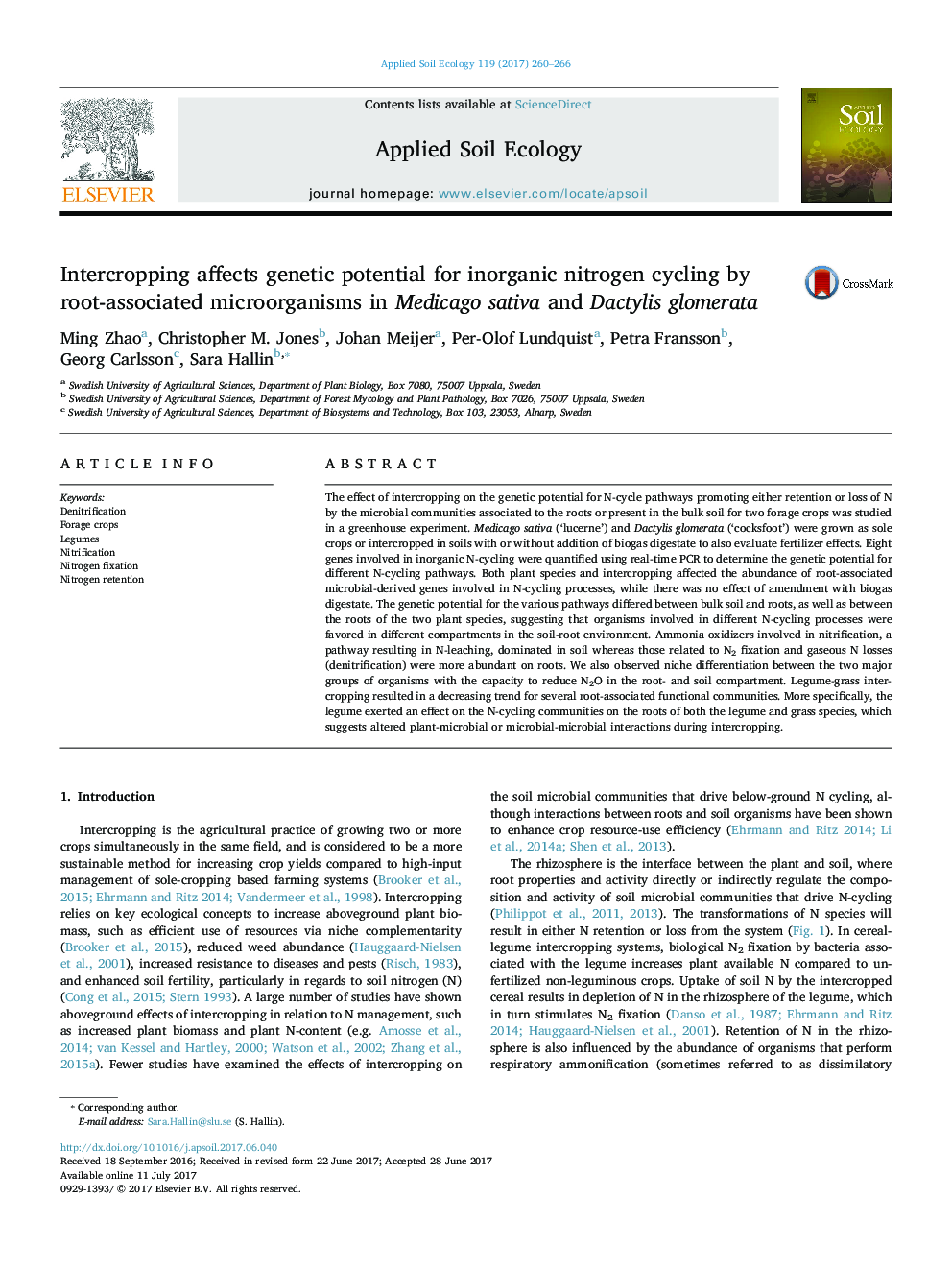| Article ID | Journal | Published Year | Pages | File Type |
|---|---|---|---|---|
| 5742632 | Applied Soil Ecology | 2017 | 7 Pages |
â¢Microbes with capacity for N2-fixation and gaseous N losses dominate on roots.â¢Genetic potential for nitrification, a criterion for N-leaching, dominate in soil.â¢Legume decrease genetic potential for N-cycling on grass roots during intercropping.
The effect of intercropping on the genetic potential for N-cycle pathways promoting either retention or loss of N by the microbial communities associated to the roots or present in the bulk soil for two forage crops was studied in a greenhouse experiment. Medicago sativa ('lucerne') and Dactylis glomerata ('cocksfoot') were grown as sole crops or intercropped in soils with or without addition of biogas digestate to also evaluate fertilizer effects. Eight genes involved in inorganic N-cycling were quantified using real-time PCR to determine the genetic potential for different N-cycling pathways. Both plant species and intercropping affected the abundance of root-associated microbial-derived genes involved in N-cycling processes, while there was no effect of amendment with biogas digestate. The genetic potential for the various pathways differed between bulk soil and roots, as well as between the roots of the two plant species, suggesting that organisms involved in different N-cycling processes were favored in different compartments in the soil-root environment. Ammonia oxidizers involved in nitrification, a pathway resulting in N-leaching, dominated in soil whereas those related to N2 fixation and gaseous N losses (denitrification) were more abundant on roots. We also observed niche differentiation between the two major groups of organisms with the capacity to reduce N2O in the root- and soil compartment. Legume-grass intercropping resulted in a decreasing trend for several root-associated functional communities. More specifically, the legume exerted an effect on the N-cycling communities on the roots of both the legume and grass species, which suggests altered plant-microbial or microbial-microbial interactions during intercropping.
